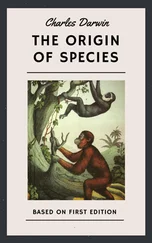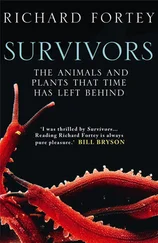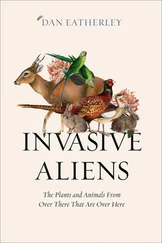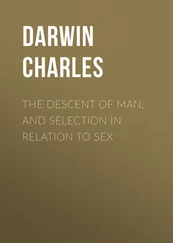Charles Darwin - The Variation of Animals and Plants under Domestication — Volume 2
Здесь есть возможность читать онлайн «Charles Darwin - The Variation of Animals and Plants under Domestication — Volume 2» — ознакомительный отрывок электронной книги совершенно бесплатно, а после прочтения отрывка купить полную версию. В некоторых случаях можно слушать аудио, скачать через торрент в формате fb2 и присутствует краткое содержание. Жанр: foreign_antique, foreign_prose, на английском языке. Описание произведения, (предисловие) а так же отзывы посетителей доступны на портале библиотеки ЛибКат.
- Название:The Variation of Animals and Plants under Domestication — Volume 2
- Автор:
- Жанр:
- Год:неизвестен
- ISBN:нет данных
- Рейтинг книги:3 / 5. Голосов: 1
-
Избранное:Добавить в избранное
- Отзывы:
-
Ваша оценка:
- 60
- 1
- 2
- 3
- 4
- 5
The Variation of Animals and Plants under Domestication — Volume 2: краткое содержание, описание и аннотация
Предлагаем к чтению аннотацию, описание, краткое содержание или предисловие (зависит от того, что написал сам автор книги «The Variation of Animals and Plants under Domestication — Volume 2»). Если вы не нашли необходимую информацию о книге — напишите в комментариях, мы постараемся отыскать её.
The Variation of Animals and Plants under Domestication — Volume 2 — читать онлайн ознакомительный отрывок
Ниже представлен текст книги, разбитый по страницам. Система сохранения места последней прочитанной страницы, позволяет с удобством читать онлайн бесплатно книгу «The Variation of Animals and Plants under Domestication — Volume 2», без необходимости каждый раз заново искать на чём Вы остановились. Поставьте закладку, и сможете в любой момент перейти на страницу, на которой закончили чтение.
Интервал:
Закладка:
Some flowers have almost certainly become more or less completely peloric through reversion, as the following interesting case shows. Corydalis tuberosa properly has one of its two nectaries colourless, destitute of nectar, only half the size of the other, and therefore, to a certain extent, in a rudimentary state; the pistil is curved towards the perfect nectary, and the hood, formed of the inner petals, slips off the pistil and stamen in one direction alone, so that, when a bee sucks the perfect nectary, the stigma and stamens are exposed and rubbed against the insect's body. In several closely allied genera, as in Dielytra, etc., there are two perfect nectaries, the pistil is straight, and the hood slips off on either side, according as the bee sucks either nectary. Now, I have examined several flowers of Corydalis tuberosa, in which both nectaries were equally developed and contained nectar; in this we see only the redevelopment of a partially aborted organ; but with this redevelopment the pistil becomes straight, and the hood slips off in either direction, so that these flowers have acquired the perfect structure, so well adapted for insect agency, of Dielytra and its allies. We cannot attribute these coadapted modifications to chance, or to correlated variability; we must attribute them to reversion to a primordial condition of the species.
The peloric flowers of Pelargonium have their five petals in all respects alike, and there is no nectary so that they resemble the symmetrical flowers of the closely allied genus Geranium; but the alternate stamens are also sometimes destitute of anthers, the shortened filaments being left as rudiments, and in this respect they resemble the symmetrical flowers of the closely allied genus Erodium. Hence we may look at the peloric flowers of Pelargonium as having reverted to the state of some primordial form, the progenitor of the three closely related genera of Pelargonium, Geranium, and Erodium.
In the peloric form of Antirrhinum majus, appropriately called the" Wonder," the tubular and elongated flowers differ wonderfully from those of the common snapdragon; the calyx and the mouth of the corolla consist of six equal lobes, and include six equal instead of four unequal stamens. One of the two additional stamens is manifestly formed by the development of a microscopically minute papilla, which may be found at the base of the upper lip of the flower of the common snapdragons in the nineteen plants examined by me. That this papilla is a rudiment of a stamen was well shown by its various degrees of development in crossed plants between the common and the peloric Antirrhinum. Again, a peloric Galeobdolon luteum, growing in my garden, had five equal petals, all striped like the ordinary lower lip, and included five equal instead of four unequal stamens; but Mr. R. Keeley, who sent me this plant, informs me that the flowers vary greatly, having from four to six lobes to the corolla, and from three to six stamens. (13/71. For other cases of six divisions in peloric flowers of the Labiatae and Scrophulariaceae see Moquin- Tandon 'Teratologie' page 192.) Now, as the members of the two great families to which the Antirrhinum and Galeobdolon belong are properly pentamerous, with some of the parts confluent and others suppressed, we ought not to look at the sixth stamen and the sixth lobe to the corolla in either case as due to reversion, any more than the additional petals in double flowers in these same two families. But the case is different with the fifth stamen in the peloric Antirrhinum, which is produced by the redevelopment of a rudiment always present, and which probably reveals to us the state of the flower, as far as the stamens are concerned, at some ancient epoch. It is also difficult to believe that the other four stamens and the petals, after an arrest of development at a very early embryonic age, would have come to full perfection in colour, structure, and function, unless these organs had at some former period normally passed through a similar course of growth. Hence it appears to me probable that the progenitor of the genus Antirrhinum must at some remote epoch have included five stamens and borne flowers in some degree resembling those now produced by the peloric form. The conclusion that peloria is not a mere monstrosity, irrespective of any former state of the species, is supported by the fact that this structure is often strongly inherited, as in the case of the peloric Antirrhinum and Gloxinia and sometimes in that of the peloric Corydalis solida. (13/72. Godron reprinted from the 'Memoires de l'Acad. de Stanislas' 1868.)
Lastly I may add that many instances have been recorded of flowers, not generally considered as peloric, in which certain organs are abnormally augmented in number. As an increase of parts cannot be looked at as an arrest of development, nor as due to the redevelopment of rudiments, for no rudiments are present, and as these additional parts bring the plant into closer relationship with its natural allies, they ought probably to be viewed as reversions to a primordial condition.]
These several facts show us in an interesting manner how intimately certain abnormal states are connected together; namely, arrests of development causing parts to become rudimentary or to be wholly suppressed, — the redevelopment of parts now in a more or less rudimentary condition, — the reappearance of organs of which not a vestige can be detected, — and to these may be added, in the case of animals, the presence during youth, and subsequent disappearance, of certain characters which occasionally are retained throughout life. Some naturalists look at all such abnormal structures as a return to the ideal state of the group to which the affected being belongs; but it is difficult to conceive what is meant to be conveyed by this expression. Other naturalists maintain, with greater probability and distinctness of view, that the common bond of connection between the several foregoing cases is an actual, though partial, return to the structure of the ancient progenitor of the group. If this view be correct, we must believe that a vast number of characters, capable of evolution, lie hidden in every organic being. But it would be a mistake to suppose that the number is equally great in all beings. We know, for instance, that plants of many orders occasionally become peloric; but many more cases have been observed in the Labiatae and Scrophulariaceae than in any other order; and in one genus of the Scrophulariaceae, namely Linaria, no less than thirteen species have been described in this condition (13/73. Moquin- Tandon 'Teratologie' page 186.) On this view of the nature of peloric flowers, and bearing in mind certain monstrosities in the animal kingdom, we must conclude that the progenitors of most plants and animals have left an impression, capable of redevelopment, on the germs of their descendants, although these have since been profoundly modified.
The fertilised germ of one of the higher animals, subjected as it is to so vast a series of changes from the germinal cell to old age, — incessantly agitated by what Quatrefages well calls the tourbillon vital, — is perhaps the most wonderful object in nature. It is probable that hardly a change of any kind affects either parent, without some mark being left on the germ. But on the doctrine of reversion, as given in this chapter, the germ becomes a far more marvellous object, for, besides the visible changes which it undergoes, we must believe that it is crowded with invisible characters, proper to both sexes, to both the right and left side of the body, and to a long line of male and female ancestors separated by hundreds or even thousands of generations from the present time: and these characters, like those written on paper with invisible ink, lie ready to be evolved whenever the organisation is disturbed by certain known or unknown conditions.
Читать дальшеИнтервал:
Закладка:
Похожие книги на «The Variation of Animals and Plants under Domestication — Volume 2»
Представляем Вашему вниманию похожие книги на «The Variation of Animals and Plants under Domestication — Volume 2» списком для выбора. Мы отобрали схожую по названию и смыслу литературу в надежде предоставить читателям больше вариантов отыскать новые, интересные, ещё непрочитанные произведения.
Обсуждение, отзывы о книге «The Variation of Animals and Plants under Domestication — Volume 2» и просто собственные мнения читателей. Оставьте ваши комментарии, напишите, что Вы думаете о произведении, его смысле или главных героях. Укажите что конкретно понравилось, а что нет, и почему Вы так считаете.












